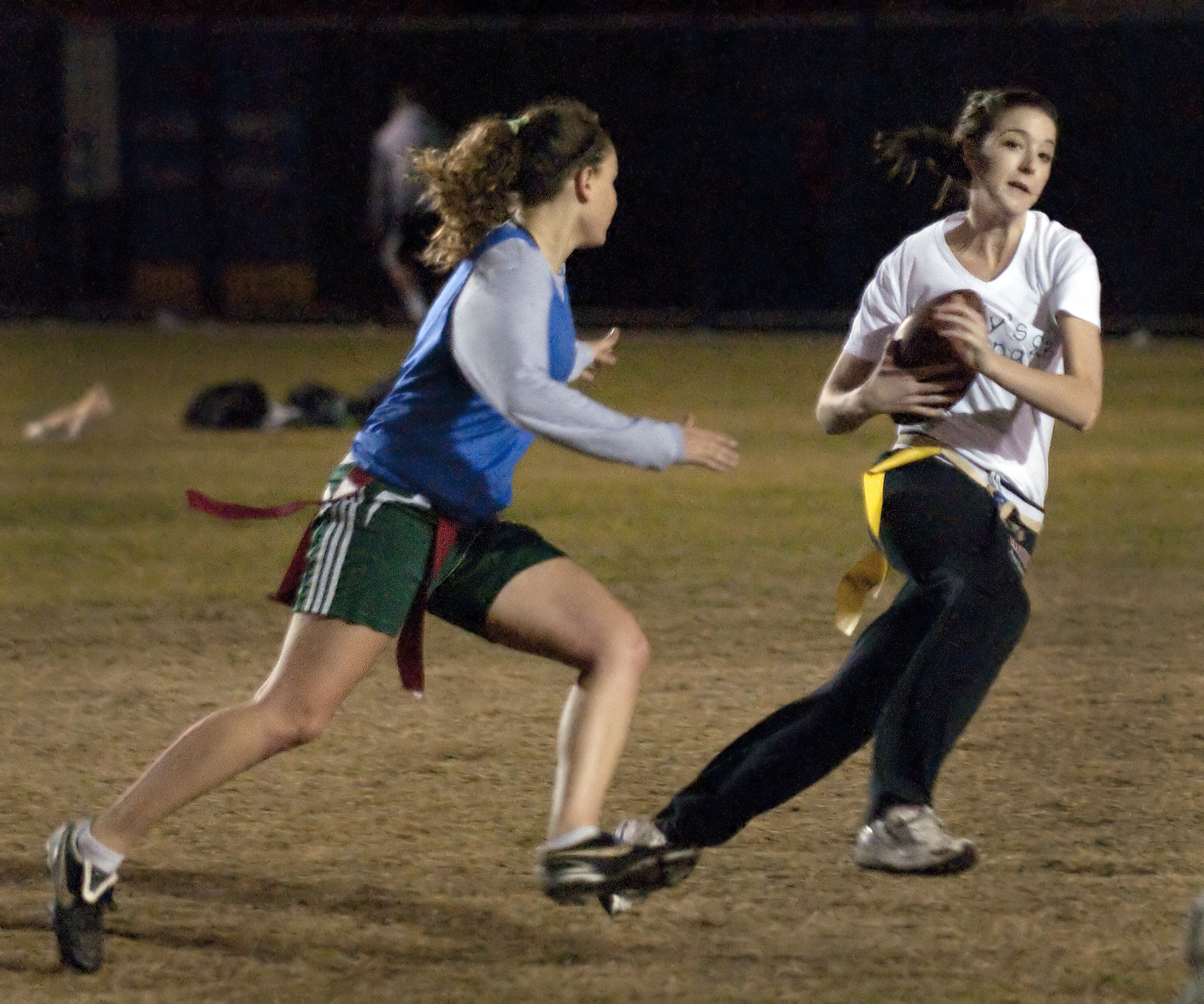Traditionally, football has been a male-dominated sport. Women’s leagues like the Independent Women’s Football League, the Women’s Professional Football Leauge and the National Women’s Football Association exist, but are not nearly as well known or lucrative as men’s leagues like the NFL and NCAA.
Football has always been about blood, sweat, testosterone and men tackling each other. Not exactly lady-like. But while UCLA’s co-ed intramural flag football isn’t the same as professional tackle football, it is doing its best to incorporate women into the game through a few different rules.
There are two types of plays in UCLA IM football: open and closed. Open plays can involve anyone on the field, while closed plays have to incorporate a female. Specifically, teams cannot run two plays in a row that do not involve a female. For instance, if a male quarterback completes a pass to a male receiver, the next play has to involve either a female quarterback or female receiver. Also, the play involving a woman needs to gain positive yardage. Failing to follow these rules results in a penalty. Furthermore, teams get rewarded for incorporating women when they score. A touchdown involving a woman is worth nine points, while a score without a woman is worth just six.
“In the case that the quarterback is a guy (on a closed play) then he will be throwing the ball to a girl or having her run, therefore including the girl in the play. So it’s not just the guys just having an advantage,” said fourth-year international development studies student Adriana Jaime, who plays for the C123 Pandas.
There are times when the rules create confusion. For people used to watching NFL or college football games, the changes are unfamiliar. Teams might be put in a situation where they are running a closed play and the ball has to go to a woman, but no women are open. The play may fail and the team would have to keep trying until the ball gets to a woman for a positive gain. Having to include women on certain plays limits the options a quarterback has and restricts what a team can do. It can be difficult to deal with.
“You’re used to watching the football games and calling the plays how you want to see them run,” said Coki Ta, fourth-year computational and systems biology student and team manager for the C123 Pandas. “But when you come to IM sports you are going to hit some walls. There’s a learning curve to how girls are used in the game and how you must incorporate them in your overall game plan.”
And as one might expect, it is hard for women to get involved in a male-dominated sport like football, even with the different rules. Women can be stereotyped as lacking knowledge of the game or unable to compete with guys. Some of these common stereotypes against women hinder their ability to contribute in the game.
“When it comes to football, it’s more of a male sport because it’s more of a contact sport,” Jaime said. “There’s the stereotypical “˜guys are more athletic.’ Or “˜guys can throw better than girls.’ “˜Girls can’t catch,’ things like that.”
“Well I think guys can think they’re better at football than girls and maybe they are,” said first-year undeclared social sciences student Holly Rankin, also of the C123 Pandas. “But girls can get excluded.”
UCLA co-ed IM football tries to overcome these stereotypes, but it is not always that easy.
This is certainly not the NFL or even the IWFL, but UCLA IM football is doing its best to include girls and increase interest for women in a sport that has always been dominated by men. Ultimately, Rankin seems to think so.
“Without (the rules) I don’t think I would get the ball as much,” Rankin said.
Maybe blood, sweat and testosterone are lady-like after all.
